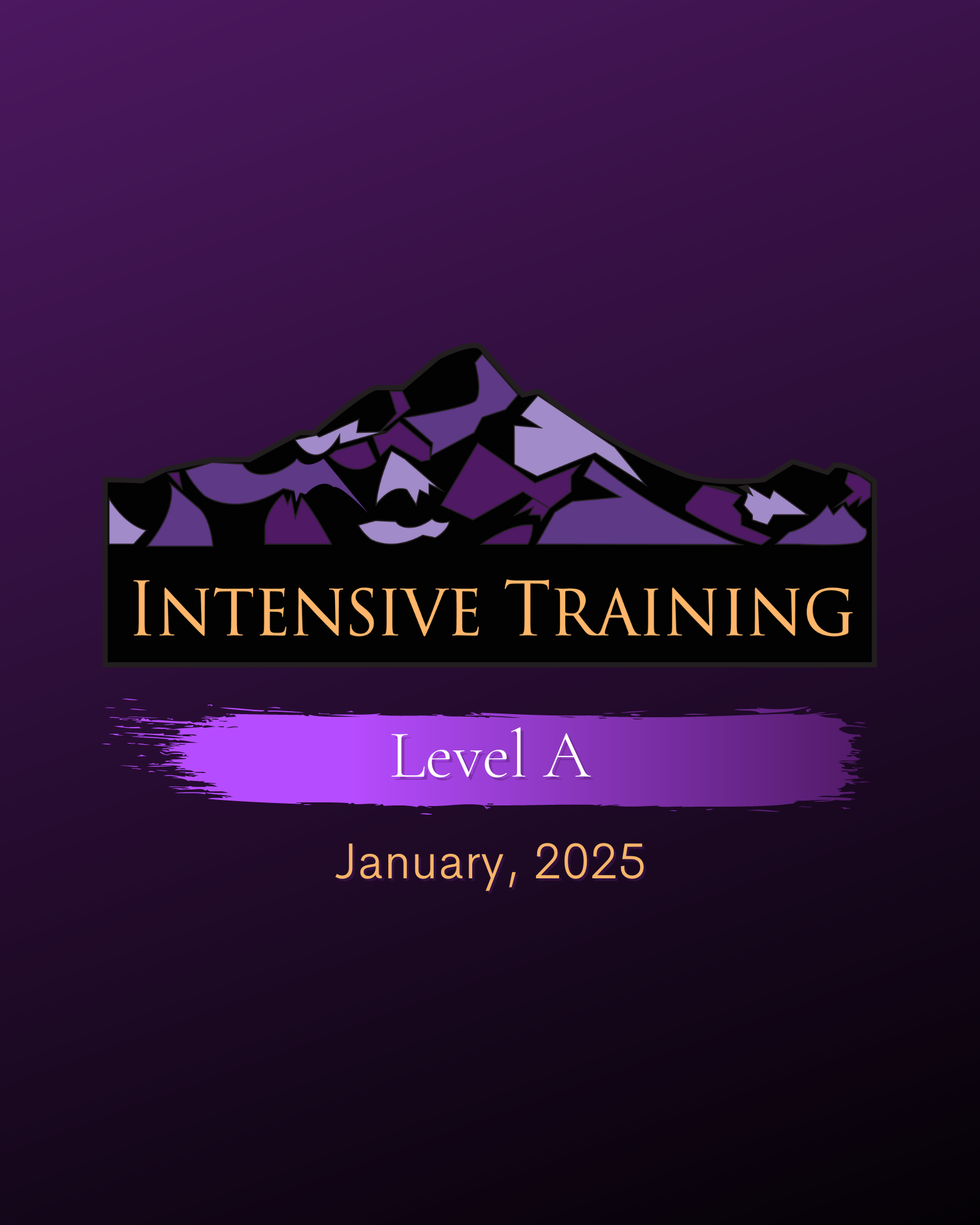Intensives Training
Understanding Intensives Training
Intensives Training is a focused learning method designed to facilitate rapid skill acquisition and knowledge retention. Through concentrated workshops or accelerated courses, participants engage in immersive activities that challenge their current understanding. For instance, in the context of professional development, **intensives training** allows individuals to engage deeply with the subject matter within a short duration, enhancing productivity and learning outcomes. This method is particularly effective in fields requiring quick adaptation and high competency levels, such as technology, health care, and creative arts.

Key Benefits of Intensives Training
Engaging in **intensives training** presents numerous advantages. First, the epistemic community formed during these training sessions fosters networking, exchanging ideas, and promoting collaboration among peers. Additionally, the concentrated format allows participants to acquire new skills rapidly, which can be beneficial in fast-paced industries. Many organizations notice substantial performance improvements post-training, as employees can apply fresh concepts and techniques immediately. Ultimately, **intensives training** accentuates a commitment to continual professional development and skill enhancement.
Types of Intensives Training
Several types of **intensives training** programs can cater to various academic or professional needs. Among them are skills workshops, boot camps, and certification programs. Skills workshops focus on honing specific competencies, whereas boot camps can cover extensive content within a short period to enable participants to grasp challenging subjects quickly. Certification programs lock in valuable credentials, often gaining recognition across industries. For organizational training, tailored programs are also emerging as effective solutions addressing company-specific challenges.
Practical Example of Intensives Training
Consider a software development boot camp that lasts for six weeks. Participants, often full-time employees, meet in the evenings to engage intensively in project-based learning. They regularly collaborate on real-world scenarios, benefiting from mentorship by industry experts. This approach not only improves coding skills but also instills collaborative ingenuity. Consequently, the participants are more equipped to contribute dynamically to their workstreams, revitalizing their career trajectories. Such practical examples underline the efficacy of **intensives training** in addressing gaps in knowledge swiftly and efficiently.
Implementing Intensives Training
Successful **intensives training** involves meticulous planning and execution. Organizations must identify their learning objectives, which will ultimately guide the program structure. Developing a curriculum that balances theoretical knowledge with practical application is essential for optimal involveMent and retention. Furthermore, leveraging technology, such as online platforms, can enhance accessibility, ensuring that even participants with demanding schedules can partake. Consistently integrating feedback mechanisms can provide valuable insights that help refine the training process continuously.
Creating a Comprehensive Curriculum
Creating a well-rounded curriculum for **intensives training** is instrumental for success. It should encompass pre-assessment to identify training gaps, core modules focusing on foundational knowledge, and advanced topics for higher-tier skill development. Practical assignments and group projects should complement theoretical lessons, thus reinforcing understanding and engagement. Including guest lectures and industry case studies can also stimulate greater interest and relevance among participants. A fluid curriculum that can adapt to feedback is critical to maximizing the training experience.
Leveraging Technology in Intensives Training
The incorporation of cutting-edge technology in **intensives training** has redefined educational paradigms. Innovative platforms allow for interactive learning experiences, utilizing virtual reality (VR) and augmented reality (AR) for skill duplicity in lifelike scenarios. For instance, healthcare professionals can practice surgeries using VR simulators, providing safe environments to enhance their skills. With such technology, trainers can present complex content engagingly while enabling hands-on experiences that contribute significantly to learning retention.
Follow-Up and Continuous Learning
Following **intensives training**, the journey does not end. Establishing a clear follow-up mechanism can greatly enhance long-term knowledge retention and skill application. Informal follow-ups in the form of discussion groups or workshops can reinforce learning, reinforcing commitment to continual development. Leveraging online resources, including forums, webinars, and alternative online courses, can encourage individuals to deepen their knowledge and seek further improvements. Thus, sustaining motivation and engagement ensures the long-term success of any training initiative.
Challenges and Considerations
While advantageous, **intensives training** is not without its challenges. First, not all learners thrive in high-pressure environments; some individuals could become overwhelmed. Trainers should be attentive to their diverse backgrounds and learning styles, providing adequate support throughout the process. Moreover, limited schedules may restrict employee participation; hence flexibility in learning formats may ease time concerns. Balancing intensity with support and engagement is imperative for fruitful experiences.
Addressing Participant Anxiety
As mentioned earlier, anxiety can inhibit effective learning during **intensives training**. Facilitators should foster an inclusive atmosphere, encouraging participants to express difficulties openly, thus promoting understanding and resilience. Incorporating mindfulness practices such as short meditation breaks can lessen stress and refocus attention during the training. Additionally, continuous encouragement and constructive feedback from trainers cultivate a supportive environment, allowing learners to feel secure in their explorations.

Flexibility in Scheduling
Considering the challenges of working professionals, scheduling flexibility can enhance engagement in **intensives training**. Evening sessions, weekend options, or a hybrid model combining online and onsite learning cater to various needs while maintaining efficacy. With periods allocated for assessment and feedback, participants can appreciate learning without feeling rushed. This approach allows individuals to balance their responsibilities while being committed to personal and professional growth.
Ensuring Quality Content Delivery
Quality trainers play a pivotal role in ensuring fruitful outcomes from **intensives training**. They should not only be experts in their fields but also capable of engaging and inspiring learners. Implementing effective pedagogical strategies permits facilitators to convey complex content interactively, enhancing participant interest. Additionally, creating engaging materials—like visual aids, real-world examples, and interactive assessments—can foster a better learning atmosphere. Ultimately, ensuring top-quality content and delivery mechanics is the backbone of any successful training initiative.
Key Takeaways
- **Intensives training** accelerates skill acquisition by providing concentrated learning experiences.
- Diverse programs, including workshops and boot camps, cater to different educational needs.
- Curriculum and logistical planning is crucial for maximizing participant impact.
- Evaluation follows training to encompass ongoing development and improvement efforts.
- Equipping trainers with the right skills helps ensure effective delivery of **intensives training**.
FAQ
1. What types of industries benefit from intensives training?
Various industries, including technology, healthcare, and education, experience significant advantages through **intensives training**. Technology, for instance, often requires fast adaptation to advancements, thus training programs must be structured accordingly. By addressing specific challenges faced across sectors, **intensives training** provides transformative solutions that enhance skills and knowledge effectively.
2. How do I choose the right intensives training program?
When selecting an **intensives training** program, assess your objectives and current skill level. Consider the program’s curriculum and how it aligns with your career path. Furthermore, evaluate the credentials and teaching methods of trainers ensuring they are experienced educators passionate about their subjects. A compact programs with strong content will cultivate optimal engagement and learning outcomes.
3. Are there any prerequisites for attending intensives training?
Prerequisites depend significantly on the program type and content depth. Some **intensives training** courses may require prior knowledge or expertise, particularly in areas like data analysis or programming. However, many are designed for varying competency levels and foster an accessible learning experience irrespective of prior background, enabling broader participation.
4. How can organizations measure the success of intensives training?
To measure the success of **intensives training**, organizations can assess participant feedback through surveys and evaluations. Performance metrics related to skill application on job sites also serve as indicators of success. Conducting follow-up assessments or observations ensures long-term knowledge retention and further informs the efficacy of the program.
5. What is the ideal duration for an intensives training course?
The ideal duration for **intensives training** typically ranges from a few weeks to several months, depending on complexity and pace. Shorter courses are often intense yet deliver essential knowledge swiftly, whereas longer programs can facilitate deeper connections and skills development. Evaluating audience needs is crucial when determining duration as it directly impacts engagement and learning outcomes.
